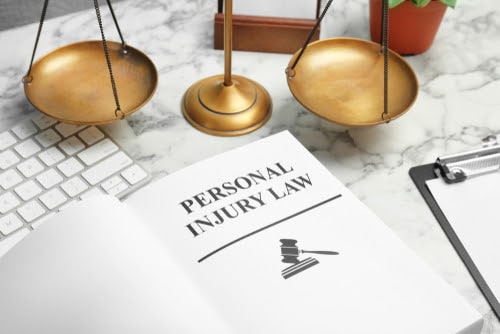If you are injured in an accident and the at-fault party’s insurer makes you a settlement offer, they will almost certainly require you to sign a release of all claims form before you cash your check. If you have not consulted with a qualified personal injury lawyer, it is not in your best interest to sign the form.
What happens if I sign a release of all claims form?
After your accident and prior to signing a release of claims form, speak with a Virginia personal injury attorney from Shapiro, Washburn & Sharp to make sure you are receiving an equitable settlement that actually covers your damages. We can examine the facts of your accident and determine how much your case is worth. Call us today or reach out online to schedule a free consultation.
What Do I Need to Know Before I Sign a Release of All Claims Form?
The wake of a serious accident is frustrating, frightening, and stressful. You are out of work, in pain, agonizing over your finances, and trying to keep up with an onslaught of physical therapy and doctor appointments. You could be forgiven for wanting to accept the insurance company’s settlement offer just to put the whole ordeal behind you. However, it is important to understand that they are not on your side. They can and will offer you as little money as possible
Insurance adjusters are persuasive and will have plausible-sounding explanations for their settlement offer. They may even go so far as to claim it is more than generous and you could not hope for anything more. This is only because they know you are, in fact, entitled to a great deal more and if they can get your signature on a release of all claims form they won’t have to pay it.
They also know if you have a personal injury lawyer from Shapiro, Washburn & Sharp overseeing your claim, the circumstances of your accident will be investigated, a thorough assessment of your needs will be conducted, and you will have someone fighting for what you actually deserve.
The Release of All Claims Form Explained
Also known as a liability waiver, a release of all claims form is a contract that releases the insurance company and their policyholder from any future liability. Once you, the plaintiff, sign the form, you can no longer seek any additional financial compensation regardless of the circumstances that arise. For example, if you sign the release before you are fully aware of the economic strain your injury will impose on your family, or later find out that you need additional surgery related to your injury, you will have to find a way to cover those damages on your own.
What Waivers Are Addressed in the Form?
The exact content of a release of all claims form will differ based on the nature of the accident, where it took place, and the insurance company involved. Generally speaking, most forms include some deviation of:
- Forfeiture of Your Right to Sue: You no longer have the right to sue the at-fault party or their insurance carrier.
- Release for Further Payment: The at-fault party is exempt from paying any additional compensation even if you later incur additional medical bills or other costs relating to your accident.
- Non-Disclosure: If your release form includes a non-disclosure agreement, you waive your right to discuss the details of your settlement with anyone.
- Non-Admission of Fault: Although it has no bearing on the amount of your settlement, this part of the agreement states that terms have been agreed on without assigning blame.
Additional information often included in a release of all claims form can include:
- Accident Details: At a minimum, the location and date of the accident will be included along with a brief summary of what happened.
- Identifying Information: The names and addresses of all involved parties.
- Claim Information: What damages the plaintiff is seeking (bodily injury, property damage, etc.)
- Payment Details: What the plaintiff is being paid for the release of liability.
- Relevant Law: The specific laws surrounding the agreement.
Bear in mind that many insurance carriers have separate agreements for bodily injuries and property damage. Be sure you understand the claims included in the document before you sign it.
Do Not Sign Away a Fair Settlement
A just settlement will help your physical recovery, stabilize your financial future, and provide some measure of justice for what you have gone through. Never downplay what you need or accept an inadequate settlement from the at-fault party’s insurer just to move things along. If you have signed a release and are having second thoughts, you may still rescind your acceptance of the offer within three days. If you have reconsidered acceptance of an offer call the insurance carrier immediately and inform them of your position and call an attorney at your earliest convenience.
Reach out to an experienced Virginia personal injury attorney from Shapiro, Washburn & Sharp who will properly value your case and only let you sign a release of all claims form if the agreement fully considers your needs. Schedule your free consultation by calling (833) 997-1774 or filling out our simple online form.
Related Content
- Are Release of All Personal Injury Liability Waivers Valid in Virginia?
- Can I Sue for Malpractice if I Signed a Medical Waiver?
- Your Right to File a Personal Injury Claim
- Car Accident Guide
